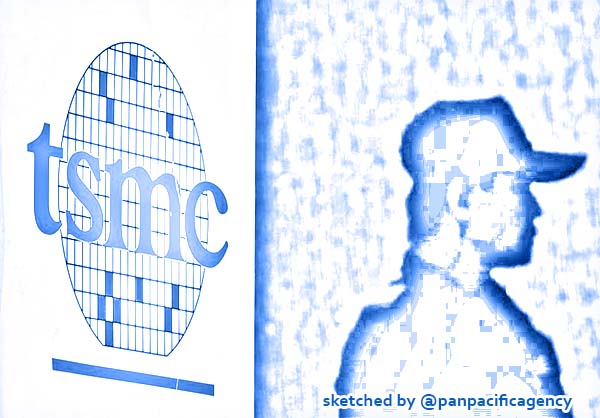[Analytics] Chinese rare earth consolidation a cause for concern

TSMC's worth reached some US$410 billion (RM1.742 trillion) today morning to surpass US firms Johnson & Johnson and Visa to rank 10th in the world, according to Bloomberg News. — Reuters pic. Sketched by the Pan Pacific Agency.
The world needs more readily available rare earth metals. These metals are used in energy transition technologies such as electric vehicles and wind turbines, in most contemporary electronic gadgets, and in some defence applications. Over the coming decades, demand for rare earths is forecasted to increase by two to eight times over current supply. Kristin Vekasi specially for the East Asia Forum.
Rare earths are part of a complex global value chain. Considerable expertise is needed to turn mined concentrates into refined, separated and industrially useful oxides. Through effective long-term investment across the rare earth supply chain, China has earned some 50–60 per cent of the mining market share and around 90 per cent in the intermediate processing stage.
In recent years, Chinese internal demand has started to outstrip supply due to the expanding electronic vehicle and renewable energy markets. China has even started to import crucial heavy rare earths from Myanmar, a supply source that has been disrupted by the COVID-19 pandemic and civil conflict.
When China announced the creation of a new state-owned enterprise China Rare Earth Group in January 2022, it caused tremors. The new ‘megafirm’ will control 60–70 per cent of Chinese rare earth production, which translates to 30–40 per cent of global supply.
This extraordinary market share is similar to Taiwan Semiconductor Manufacturing Company’s 50 per cent share of global semiconductor fabrication. Recent history highlights problems with such high market concentration. Supply chain issues exacerbated by the pandemic have showed how reliance on single firms or countries can be disruptive and difficult to resolve when the source firm or country cannot deliver. High concentration of production and asymmetric trade dependencies have facilitated the use of economically coercive trade and investment policies around the world.
Import-reliant countries such as Japan and the United States have securitised rare earths, along with other minerals that have recently been deemed ‘critical’. In late 2021, a US Department of Defense official commented that the critical materials sector is a ‘microcosm for the geopolitical and geo-competitive forces shaping the 21st-century’.
The United States has been reinvigorating domestic production of rare earth minerals. But the United States still relies on China for most post-processing and lacks an independent supply chain. For over a decade, Japan has been spurred by the purported export ban of rare earth minerals — amid the flaring of a territorial dispute with China — to invest in rare earth diversification. But Japan faces similar challenges to the United States in developing an independent supply chain for rare earth minerals. Building a new supply chain can take up to a decade, and most proposed projects fail.
Concerns about rare earth supplies from China are not unfounded. In the 2000s, China implemented quantitative export restrictions of rare earths, and China’s alleged 2010 export ban directed toward Japan heightened fears in importing countries that Chinese rare earths might be a tool of techno-nationalism. The WTO ruled against these restrictions, leading to China implementing production quotas that also restricted supply. In the United States, stakeholders tie these concerns with the defence applications of rare earths, linking into Washington’s discourse of competition and economic decoupling with China.
China has been supplying the world with rare earths for the past three decades. Chinese research and development has increased the efficiency and yields garnered from mining and processing rare earths. The increased vertical integration from China Rare Earth Group will likely improve yields from existing mines.
The China Rare Earth Group is the result of a merger of three large mining conglomerates and two research institutes. It will control China’s heavy and medium rare earths, under the supervision of the State-owned Assets Supervision and Administration Commission of the State Council. An additional rare earth megafirm that controls China’s light rare earths could be forthcoming in the future.
The main goals of the new megafirm are rooted in the domestic political economy, including market consolidation under state control, matching supply to demand, emphasising vertical integration and higher value-added domestic production, and more price stability. Prices for rare earths have been increasing due to surging demand and constraints on Chinese producers, particularly due to environmental regulations.
The consolidation will likely cement China’s dominant global market position, especially in post-processing. For governments and firms worried about rare earths as a supply chain chokepoint, this news will exacerbate that concern. They should take this opportunity to redouble efforts to diversify supply chains through market-based approaches and public–private partnerships. Given that one of the non-Chinese rare earth supply chains relies on Russian minerals and Estonian processing, policy makers should wake up to the realities and challenges of broad, resilient diversification.
OECD countries should be diversifying even in the absence of geopolitical competition. Diversification and resilient supply chains are necessary to keep up with the growing green economy and to match the demands of the proposed ‘Green New Deal’ policies. Policymakers should view this merger as a nudge towards meeting the challenge of a green energy future.
Kristin Vekasi is Associate Professor in the Department of Political Science and School of Policy and International Affairs at the University of Maine.